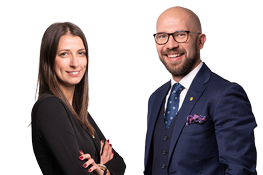Sustainability and ecology
2025 will see the further strengthening of the sustainability trend, which has become a priority in the packaging industry for pharmaceuticals, cosmetics, and dietary supplements. Consumers, increasingly aware of the environmental impact of their choices, expect solutions that minimize their footprint on the planet. In response, manufacturers are focusing on recycled and reusable packaging.
In the pharmaceutical sector, “eco-design” solutions are being implemented more frequently, combining an ecological approach with strict safety and product protection requirements. Similarly, in the cosmetic industry, brands are opting for minimalist packaging designs, reducing weight and refinements to lower the carbon footprint of the entire product. At the same time, mono-materials and transparency are becoming key elements – consumers want to know what materials are used in packaging and what happens to them after use.
Sustainability is not just about materials. Production technologies that reduce energy and water consumption and minimize waste are also crucial. At Preston Packaging, we offer comprehensive consulting to help clients implement eco-friendly solutions. This enables them to not only meet changing consumer expectations but also comply with increasingly stringent environmental regulations.
Moreover, in 2025, sustainability in packaging will no longer be just a trend – it will become an essential element of competitive strategy. Consumers increasingly choose brands engaged in ecological initiatives, and the absence of such actions may hinder customer loyalty. At Preston Packaging, we understand the importance of building a sustainable offering and actively support our partners, combining the latest technologies with deep industry knowledge. This allows us to create packaging that is not only functional and safe but also environmentally friendly.
Technological innovations, automation, AI
Advanced production technologies in offset printing house, specializing in packaging and leaflets for pharmaceuticals, dietary supplements, and cosmetics, are key to increasing operational efficiency. In the era of intense digitalization and growing consumer expectations, the printing industry faces the challenge of producing high-quality packaging that meets visual requirements while aligning with sustainability trends.
Automation, as one of the pillars of Industry 4.0, is transforming packaging production by introducing greater precision, efficiency, and flexibility. Modern technological solutions allow for shorter order fulfillment times, cost optimization, and error minimization in the production process, reducing complaints and ensuring on-time product deliveries.
Today, automation is involved in nearly every stage of production – from graphic file preparation and plate making to the printing process itself. Printing machine management systems, such as advanced color management and raw material monitoring modules, support operators by ensuring the highest quality and consistency. Additionally, AI technology enables real-time data analysis, allowing for immediate adjustments and increased efficiency.
For clients ordering packaging production, this means not only saving time and money but also a guarantee that their products will meet the highest aesthetic and quality standards. Thanks to modern production systems, processes can be precisely managed, eliminating errors that could delay product launches.
At Preston Packaging, we have been implementing solutions that address these challenges for years. Our CLOUDFLOW® software provides clients with full transparency and control over the production process. It enables real-time order placement, feedback exchange, and continuous monitoring of progress. This approach significantly improves collaboration, shortens order completion times, and minimizes potential issues.
Implementing new technologies is not always seamless, which is why customer support is crucial at every stage. At Preston Packaging, we focus on a gradual introduction of changes, offering training, technical assistance, and ongoing feedback analysis. This ensures that our innovative solutions not only streamline production but also build trust and help develop the packaging market together.
In 2025, technologies like automation and AI will no longer be just additions to production – they will become its foundation, ensuring efficiency, quality, and sustainability in response to the dynamic market changes.
Minimalism and aesthetics
This year, minimalism will become one of the leading trends in the packaging market for pharmaceuticals and cosmetics. Consumers are increasingly choosing packaging that combines simplicity with functionality, reflecting their concern for the environment. Graphic designs will be simplified to enhance readability and elegance – clean lines, balanced typography layouts, and a limited number of visual elements will create harmony and consistency with the product.
A key aspect of the minimalist approach will be the use of natural, muted colors, such as beige, green, gray, and white, emphasizing the organic nature of the product and its ecological associations. This approach not only meets consumer expectations but also strengthens a brand’s message, emphasizing transparency, authenticity, and sustainability. In the pharmaceutical industry, simple designs also facilitate the identification of key information on packaging, which is crucial for user safety.
Minimalist and aesthetically pleasing packaging is not just a fashion trend but also a communication strategy that builds customer trust and increases product attractiveness. In 2025, simplicity will become synonymous with luxury and quality, responding to contemporary market and consumer needs.
The Opposite Trend: Stand Out or Perish
In contrast to minimalism, another trend is emerging – bold, colorful packaging designed to attract attention and provoke interest. In a market saturated with products, particularly in the dietary supplements and cosmetics sectors, brands will focus on packaging that “shouts” with character. Intense colors, original patterns, and rich embellishments, such as embossing, varnishing, or metallic foils, will be key to standing out on the shelf.
The success of such designs will depend on close collaboration with printing houses, which should be involved from the conceptual stage. Engaging the printing house early enables consultations with designers to develop solutions that are both striking and cost-effective. This approach ensures packaging that is visually spectacular while meeting market demands and budgets. Although this trend contrasts with minimalism, it will find its place among brands that prioritize boldness and creativity in customer communication.
The Impact of Trends on Packaging Printing Companies
Each new year brings significant changes to packaging printing, requiring adaptations in production processes and service offerings. Investments in technologies that reduce raw material consumption and minimize production waste will play a crucial role. Automation and quality management systems will not only enhance efficiency but also ensure high ecological standards increasingly required by clients and regulations.
Printing houses must also tailor their offerings to the growing demand for sustainable packaging while addressing the trend of richly decorated packaging. Clients expect greater involvement in the design process and support in creating packaging – from early consultations to product adaptation and efficient production.
Additionally, printing houses must consider evolving regulations. The EU Deforestation Regulation (EUDR) is a groundbreaking legal act aimed at reducing forest degradation caused by excessive EU consumption. This regulation restricts the trade of certain goods associated with deforestation, including solid board packaging. Its objective is to reduce greenhouse gas emissions and biodiversity loss, promoting deforestation-free consumption and minimizing the EU’s global impact.
Every entity in the supply chain must ensure that their products comply with Regulation (EU) 2023/1115 (EUDR). Information related to these products must be retained for five years, demonstrating due diligence and confirming no risk of non-compliance.
SUMMARY
The new year brings changes to the packaging market for pharmaceuticals, cosmetics, and dietary supplements. Key trends such as sustainability, production automation, and diverse design approaches reflect growing consumer expectations and regulatory requirements. Printing houses must invest in new technologies and educate clients on eco-friendly solutions and evolving regulations. Adapting to these changes will not only meet challenges but also drive industry growth. In 2025, innovation, creativity, and sustainability will be the foundation of success in this demanding market. Choose a printing house committed to your success – choose Preston Packaging.






